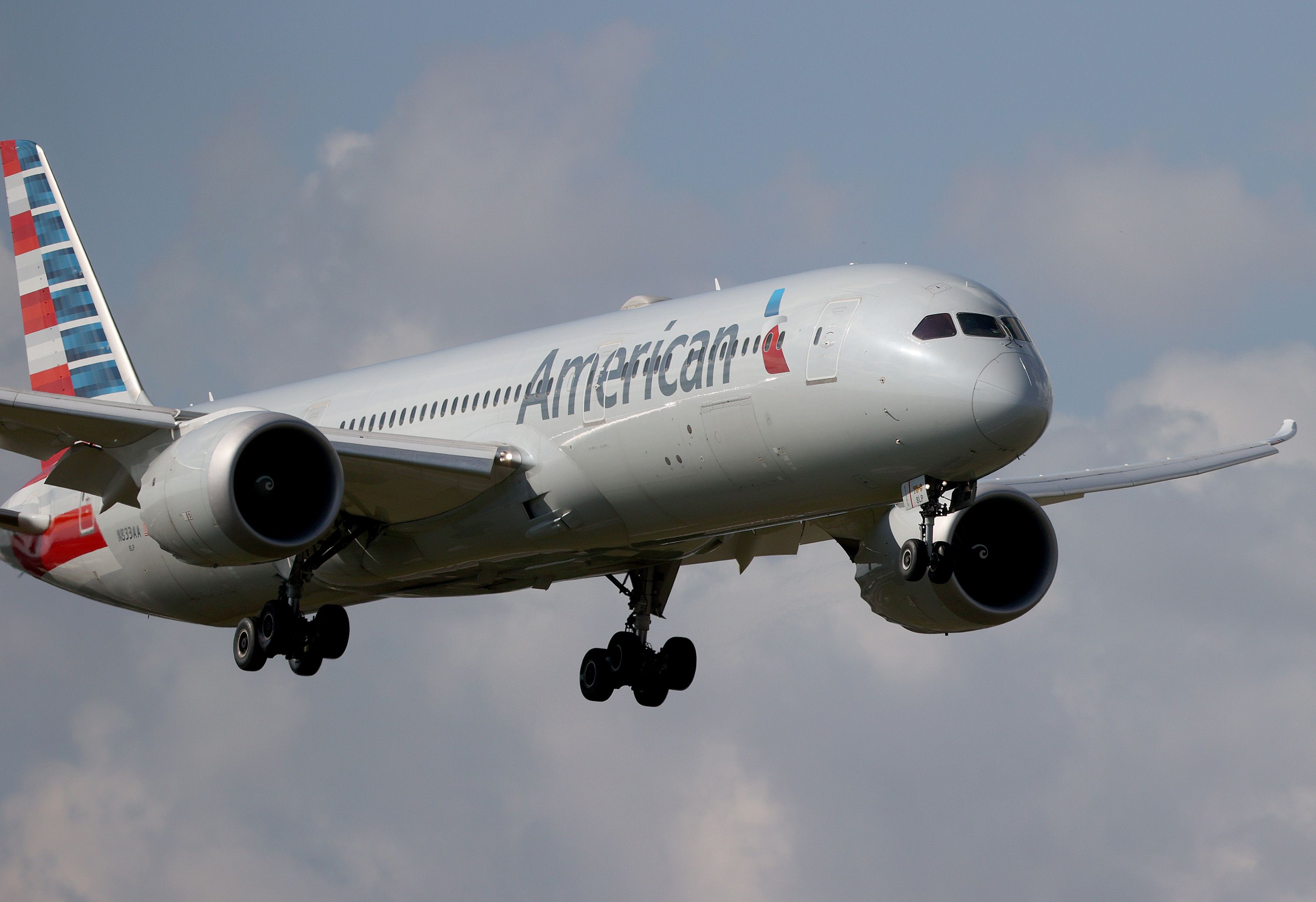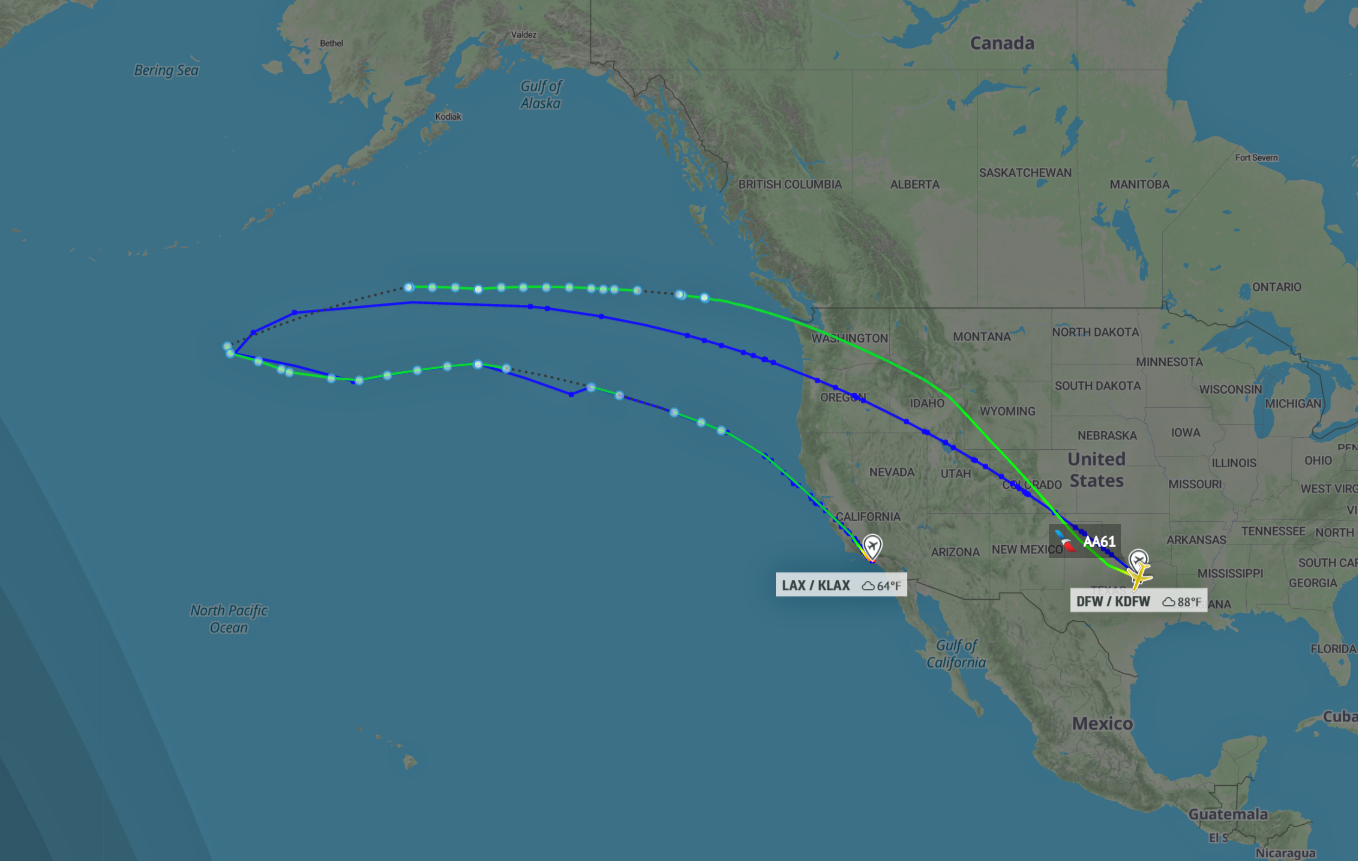An American Airlines Boeing 787, midway across the Pacific last week, diverted back to the US over the weekend, meaning the passengers spent around 12 hours in the air to not get very far at all. The flight began at Dallas Fort Worth and ended up in Los Angeles. But the reason for the diversion was good - it wasn't your run-of-the-mill technical issue, air rage, or medical emergency. Rather, ash clouds from a Russian volcano caused the turnaround.
The long way round to Los Angeles
Per One Mile At A Time, the Boeing 787-9 Dreamliner (N838AA) was operating AA61 from Dallas Fort Worth (DFW) to Tokyo Narita (NRT) on Saturday, May 28. That's American Airlines' midday departure from DFW that is timetabled to take 13 hours to complete the flight to Japan. The flight began normally enough, flying over the North American mainland before heading out to sea at Neah Bay, right above the US - Canada border. The Dreamliner then settled onto a more westerly course and tracked south of the Gulf of Alaska.
Some distance south of the Fox Islands, the jet changed onto a more southwesterly course shortly before making a sharp turn and heading back towards the US. At this point, the Boeing 787-9 was more than seven and a half hours into the 13-hour flight. Flight tracking places the turnaround point close to latitude 47 and longitude -170.
The Dreamliner flew east for roughly 90 minutes before settling onto a firmer south-easterly tracking and overflying the US coastline close to San Francisco and then tracking straight down to Los Angeles Airport, where it landed at 22:12 Pacific Daylight time. As One Mile At A Time pointed out, that was 12 hours in the air to get to an airport just 1,235 miles (1,986 kilometers) distant from the origin airport.
American Airlines Dreamliner dodges a volcanic ash cloud
So, what happened? The official word out of American Airlines cites a "weather issue." It turns out that the weather issue was a volcano erupting near Bezymianny on the Kamchatka Peninsula in eastern Russia. Over the weekend, satellite data recorded the volcano sending ash 50,000 feet into the atmosphere.
However, while AA61 turned around, other aircraft in the vicinity elected to add some flying time to the trip and kept going. United Airlines flight UA7 out of Houston (IAH) and UA837 out of San Francisco (SFO) were both in the air heading to Tokyo. The pilots of those planes decided to keep going but increased the journey length by about one hour by diverting away from any ash. Safety is paramount for every pilot and every flight's circumstances are unique - those AA pilots did what was in the best interests of the plane and the people onboard.
"We don't expect any ash to fall in Alaska, but we had some airborne ash," Hannah Dietterich from the Alaska Volcanic Observatory told Alaskan radio station KINY 800. "Where it's affecting aviation, it's affecting aircraft in the area, but we don't expect any of that ash to produce any significant fall in the Aleutian Islands. The ash clouds have gone primarily south of all the islands out over the North Pacific."
Ash cloud to linger but flights look like they are operating normally
KINY 800's report noted that the ash clouds extended up to about 50,000 - 52,000 feet, well above the altitudes most aircraft can fly. Local volcano watchers say this ash cloud was fairly concentrated. While the winds will thin the clouds out, they will linger and spread out.
"This does still impact aircraft traffic over the region," says John Cowen from the Alaska Aviation Weather Unit. "Volcanic ash events as far as their aviation impacts tend to last anywhere from a day to multiple days to even weeks in some historical cases."
American Airlines' daily AA61 flights to Narita have continued normally since the weekend's turnaround.
Sources: One Mile At A Time, KINY 800


